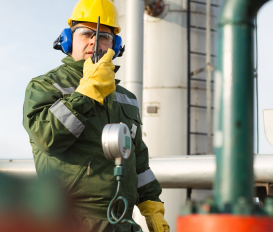
Sam Eaton, Business Development Manager
After a tough 18 months for the construction industry, which saw a contraction in real terms due to the Covid-19 pandemic, things are gradually returning to normal. Construction companies are increasingly under pressure to make up for this lost production time, particularly given the recent sharp rise in demand in the house-building and other sectors.
The industry has long faced criticism for projects being delivered over budget and late, combine this with a lack of skilled workers due to furlough and redundancies, and the rising costs of building materials which are stuck in the supply chain, and it all points to a high pressure point for management. Given these difficult circumstances, construction companies must find other ways to increase their efficiency and sustainability, whilst optimising how they work and ensuring workforce safety.
They need to innovate by maximising the potential of advances in software and technology, such as Building information Modelling (BIM), onsite 3D printing and augmented reality, but all of this requires high speed, reliable and portable internet connectivity, something which has always been hard to come by on construction sites. The lead time for installing fixed fibre communication lines can be months, involving minimum duration contracts or difficult access conditions.
 The landscape shift with wireless route tunnelling and 5G
The landscape shift with wireless route tunnelling and 5G
The digital revolution is providing a ground-breaking alternative to fixed line, allowing the construction industry to gain new capabilities via wireless onsite connectivity, known as ‘route tunnelling’, from a main headquarters to the site. Wireless broadband internet, delivering high speed and low latency connectivity via 4G, currently provides most of the connectivity.
In the near future, applications which need greater bandwidth for sizeable data transfers, will benefit greatly from the roll out of 5G, e.g. when downloading and viewing project data such as CAD drawings. 5G will also enable even more resilient network access to improve safety and compliance on site and enhance communication between sites and remote workers due to reduced time-lag.
Both 4G and 5G technologies are quick and easy to install and scalable to any size project, from national infrastructure projects and vast office buildings to small timber frame construction sites. Using multiple SIMs and bonded routers, construction sites will have secure access to fibre speed broadband and a reliable VoIP telephone system, allowing any number of users to seamlessly communicate, as if they were in a permanent office.
One of the fastest growing areas, where IoT is having a significant impact on ways of working, is access control to construction sites. Turnstiles and key card readers at entry and exit points keep track of contractors entering and leaving sites, which provides data for payroll and health and safety reporting. Entry turnstiles can incorporate temperature and mask wearing checks using contactless technology, invaluable during and post Covid-19, by helping management to keep their workforce safe.

CCTV monitoring advances using cellular
Security is one of the biggest challenges on any construction project, at one time the only option was to pay for expensive manned guarding, which was often ineffective due to human fallibility. CCTV using cellular connectivity has revolutionised this area. Multiple network SIMs connect to any network to provide ‘always on’ connectivity, which is fit for purpose for CCTV cameras deployed over multiple locations. By using a private VPN, companies can ensure the complete security of data.
Cellular CCTV cameras provide a cost effective, efficient, easy to install and rapidly deployed solution at any scale. The largest projects use multiple mobile CCTV towers to cover the whole site, each with their own power supply and 24/7 remote monitoring. This flexible solution can easily be adapted as a project timeline progresses.
New ways to ensure perimeter detection
Empty sites can seem like an invitation to intruders and criminals; when there are expensive assets on site it is critical to ensure that they are fully protected. Physical deterrents, such as perimeter hoardings and anti-climb fencing, alongside smart IoT solutions, such as motion sensors which alert security guards to attend and secure a site, give peace of mind to property owners.
Where properties like warehouses, abandoned housing and disused buildings lie vacant for months or even years at a time, CCTV monitoring helps to prevent vandalism and antisocial behaviour, which in turn lessens the negative impact of such sites on local communities. CCTV also alerts owners to issues caused by storm or flood damage.

Wireless Logic has the solution
Construction companies need high quality, reliable, internet network connectivity to maximise their workflow and take advantage of new technologies. They need robust access control to carefully monitor the people on their sites during the working day, and CCTV to keep them secure during downtime. Finding experienced and trusted providers who can supply the connectivity solution and services that sites require is crucial.
Wireless Logic have a flexible ‘plug and go’ solution ready to be rapidly deployed to any size of project. We have partnerships with multiple network providers, to ensure that we can provide a full end-to-end solution with resilient ‘always on’ connectivity. We are also ISO 27001 certified, which demonstrates our commitment to information and data security. By choosing the right connectivity partner, forward thinking construction companies will benefit from all the opportunities that the latest advances in technology present.
If your company specialises in providing connectivity solutions to construction companies, get in touch today to see how Wireless Logic can make all the difference.


